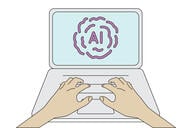You have /5 articles left.
Sign up for a free account or log in.
Recent headlines have been full of disappointment for Americans, particularly regarding institutions that affect their daily lives. First it was the banks who argued that they were “too big to fail” in asking for a federal bailout and then proceeded to award obscene bonuses to their executives. Then it was the automakers, who made a mockery of the maxim “what’s good for General Motors is good for the country” when CEOs of the “big three” took corporate jets to Washington to plead for their own rescue package.
Now, it seems, higher education is joining the list. As colleges and universities hike tuition and cap enrollments while pleading for billions of federal dollars, we have new evidence that public disappointment and disillusionment with higher education are building rapidly. Through new opinion research conducted by our organization, the National Center for Public Policy and Higher Education, and Public Agenda, the American public is sending messages that colleges and universities and state and federal policymakers cannot afford to ignore. These messages include:
Alma mater has become Higher Ed, Inc. While most academics bristle at the admonition for higher education to run more like a business, that is exactly what’s happening in the public’s view, and they’re not sure they like it. We were surprised enough when more than half of Americans voiced the belief three years ago that colleges and universities are more interested in their bottom lines than in providing a good education for students. We have been even more surprised -- and dismayed -- to see that figure jump almost 10 percentage points in just three years.
Let’s be clear. The public is not saying that they do not want higher education institutions to focus on efficiency and effectiveness. In fact, they believe colleges and universities could educate more students with the resources they have. When they see tuition rates outpacing the average family’s paycheck even in times of economic distress, or read stories about excessive compensation of college presidents or about universities bailing out athletic programs while furloughing faculty, it isn’t hard to see how people might be just a bit skeptical about higher education’s priorities.
We can walk and chew gum when it comes to balancing access, quality and cost. In some of our earlier research, we uncovered a pervasive belief among college presidents that cost, access, and quality are locked in a zero-sum game, one that we dubbed “the iron triangle.” Expanding access means either increasing costs or sacrificing quality, containing costs requires limited access or skimping on quality, and so on. As in previous recessions, we are seeing this belief in action in the states, as some of our largest public college and university systems are freezing or rolling back enrollment and/or hiking tuition in the name of preserving quality.
The problem is that a growing majority of Americans just don’t buy that line of argument. More than half of those surveyed agree with the statements that colleges could spend less and still provide a quality education and that colleges could serve more students without hiking prices or damaging quality. These numbers have held steady over the past three years, which is not surprising, given that most people are experiencing significant changes in the workplace due to the recession, international competition, and technological change. They have not seen evidence of parallel innovations in higher education, and they’re wondering why.
We can’t live without higher education, but can we live with it? Simply put, people are feeling trapped. The “squeeze play” -- the combination of beliefs that higher education is essential but that many qualified students are being shut out -- continues and the majority agreeing with both of these statements has reached record highs. This trend is likely to continue as the economy continues to punish the undereducated most severely, and the fiscal slump prompts more tuition hikes and enrollment caps in the face of severe national economic distress. As the squeeze on students and families intensifies and confidence in the altruistic mission of colleges erodes, higher education’s position in the competition for public resources when the economy recovers may be seriously undermined.
So what does this mean?
For colleges and universities and their advocates in Washington, the message being sent by the public is clear. Spending time and money explaining why higher education is essential to the nation’s future is not the answer. Our data show very plainly that the American people get it when it comes to the need for higher education. But those same data also depict a public that is quickly becoming increasingly skeptical of the leadership and management of colleges and universities.
Rather than acknowledging the public’s concerns, some higher education lobbyists and advocates instead criticize the public as uninformed. While the average American may not understand the details of the higher education enterprise, the point is that the American people are anxious, frustrated, and not convinced that colleges and universities are being managed in ways that are consistent with their values. A PR campaign will not fix that. In this case, actions truly will speak louder than words.
For policy makers at the state and federal levels, these numbers represent a signal that voters are increasingly interested in what they are doing and will do to keep higher education affordable and accessible. The answers will not be easy in this campaign season, with the federal stimulus tapering off and many states facing severe budget shortfalls.
The inconvenient but unavoidable truth is that the time has come to talk about real changes in how higher education is funded and delivered.




